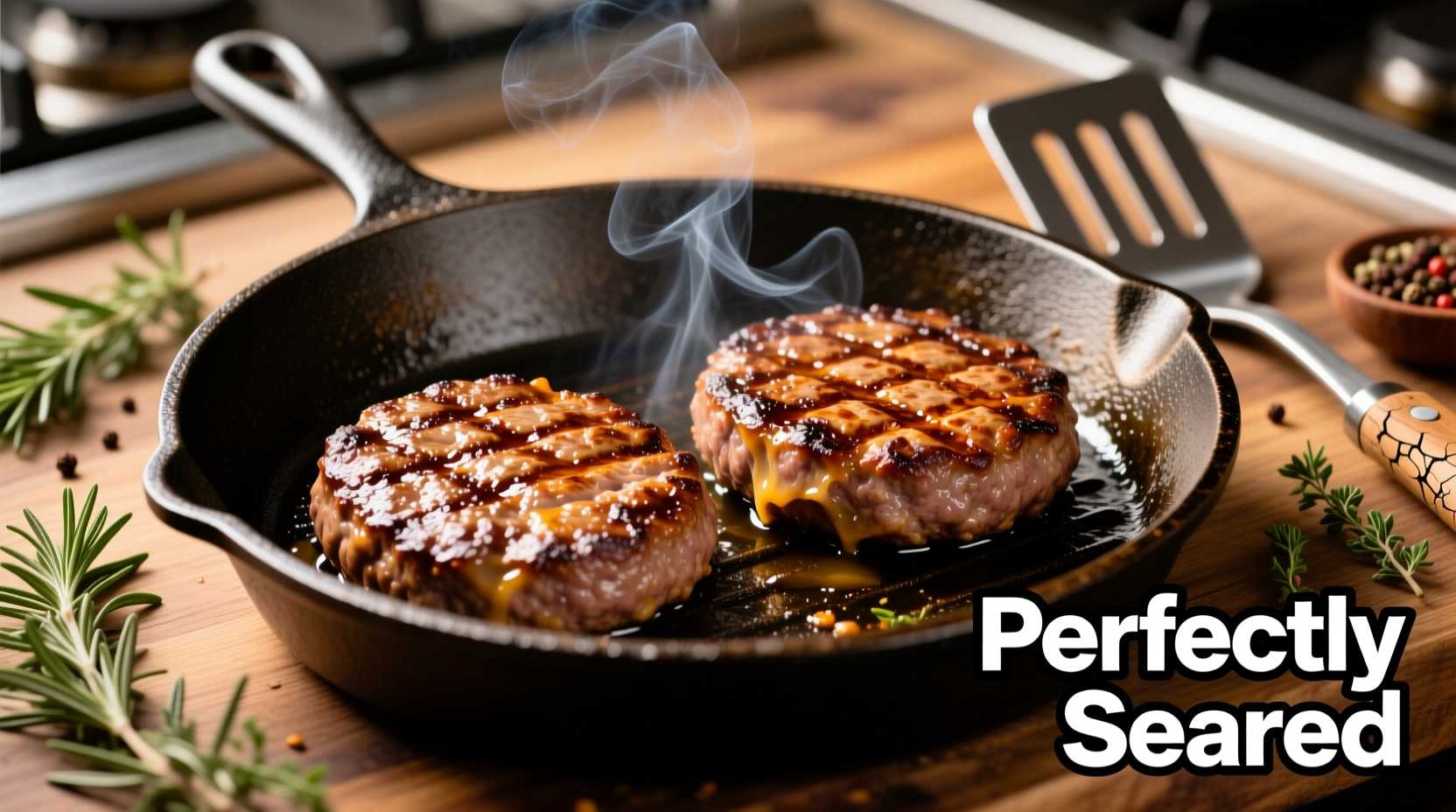Cook hamburger patties for 3-4 minutes per side for medium doneness on a preheated stove at medium-high heat (350-375°F). Adjust time based on thickness: 1/2-inch patties need 3 minutes per side, while 1-inch patties require 4-5 minutes per side. Always verify with a meat thermometer—160°F is the safe internal temperature for ground beef.
Getting the perfect stove-top hamburger requires precise timing and technique. Whether you're a beginner or looking to refine your skills, this guide delivers the exact cooking times, visual indicators, and professional techniques that guarantee juicy, safe burgers every time.
Why Stove Cooking Time Varies: The Science Behind Perfect Burgers
The ideal cooking duration depends on three critical factors: patty thickness, stove temperature, and desired doneness. Unlike grilling, stovetop cooking provides consistent, controlled heat that prevents flare-ups while allowing precise timing.
Professional chefs like Antonio Rodriguez emphasize that "ground beef's high surface-area-to-volume ratio means timing is critical—just 30 seconds too long per side can turn a juicy burger dry." This precision makes understanding exact cooking parameters essential.
| Patty Thickness | Medium-Rare | Medium | Well-Done |
|---|---|---|---|
| 1/2 inch | 2-2.5 min/side | 3 min/side | 4 min/side |
| 3/4 inch | 2.5-3 min/side | 3.5 min/side | 4.5 min/side |
| 1 inch | 3-3.5 min/side | 4-4.5 min/side | 5-6 min/side |
Source: USDA Food Safety and Inspection Service temperature guidelines for ground beef
Step-by-Step Cooking Process
Preparation Essentials
Start with 80/20 ground chuck—the ideal fat ratio for moisture retention. Form patties 1/2 inch thicker than your desired final size (they'll shrink 20-25% during cooking). Create a shallow thumbprint in the center to prevent bulging.
Critical mistake to avoid: Over-handling the meat. "Excessive compaction squeezes out juices before cooking even begins," explains Rodriguez. Handle patties minimally—just enough to shape.
Stove Setup & Temperature Control
Preheat your cast-iron or stainless steel skillet for 5 minutes over medium-high heat (350-375°F). Test readiness with the water droplet method: drops should sizzle vigorously but not instantly vaporize.
Use high-smoke point oils like avocado or canola (not olive oil). Add just enough to coat the surface—about 1 teaspoon. Never use non-stick spray directly in hot pans as it creates residue.
Cooking Timeline with Visual Indicators
Place patties gently in the skillet, leaving space between them. Here's what to watch for at each stage:
- 0-90 seconds: Searing begins—don't touch patties. You'll hear a strong sizzle
- 2 minutes: Edges turn brown; juices begin rising to surface
- 3 minutes: Deep brown crust forms; patties release naturally from pan
- Flip point: When liquid on surface turns clear (not red)
The USDA Food Safety and Inspection Service confirms that "ground beef must reach 160°F internally to eliminate pathogens like E. coli." This is non-negotiable for safety—never rely solely on timing.

Safety First: The Temperature Imperative
Unlike steaks, hamburgers require full cooking through due to surface bacteria being mixed throughout during grinding. The FoodSafety.gov chart confirms:
- Medium-rare (130-135°F) is unsafe for ground beef
- Medium (140-145°F) still carries risk
- 160°F is the minimum safe temperature
Insert your thermometer horizontally through the side of the patty to the center. Wait 15 seconds for an accurate reading. If below 160°F, continue cooking in 30-second intervals.
Resting: The Secret to Juiciness
Transfer cooked burgers to a wire rack (not plate) and rest for 5 minutes. This allows juices to redistribute—skipping this step causes 20-30% moisture loss when cutting.
Context Boundaries: When Timing Changes
Your exact cooking time will vary based on these factors:
- Frozen patties: Add 1-2 minutes per side (thaw preferred)
- Cast iron vs. stainless steel: Cast iron retains heat better for consistent searing
- Ambient temperature: Cold kitchen adds 15-20 seconds per side
- Patty composition: Turkey/chicken burgers need 165°F (longer cooking)
Troubleshooting Common Issues
Problem: Patties stick to the pan
Solution: Ensure proper preheating and avoid moving too soon. The Maillard reaction (browning) creates natural release—wait for the sizzle to mellow slightly.
Problem: Uneven cooking
Solution: Press thumbprint deeper in center (1/4 inch) to counteract bulging. Rotate patties 90 degrees halfway through first side for even sear marks.
Problem: Excessive smoke
Solution: Reduce heat slightly and ensure proper ventilation. High-fat blends naturally produce more smoke during searing.
Pro Tips for Restaurant-Quality Results
"The final 30 seconds make or break your burger," says Rodriguez. "When flipping, add cheese immediately and cover the skillet—this creates steam that melts cheese evenly while finishing cooking without drying out the meat."
For thicker patties (over 3/4 inch), finish in a 400°F oven after searing both sides—this prevents burnt exteriors with raw centers. Always season just before cooking; salt draws out moisture when applied too early.











 浙公网安备
33010002000092号
浙公网安备
33010002000092号 浙B2-20120091-4
浙B2-20120091-4